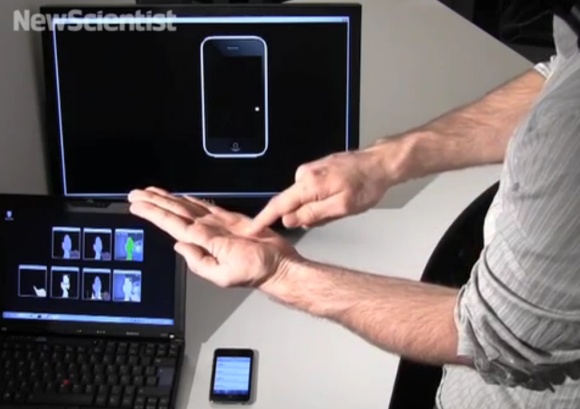You’re doing the dishes and at the climatic moment when your hands are soaked to the bone and covered in food waste and suds, the phone starts ringing. It’s that job you’ve been inquiring about, and you’re about to let that opportunity wash down the drain. The imaginary phone wants to help you out.
The people at the Hasso Plattner Institute at Potsdam University in Germany have created a way to use your palm as a means to operate your phone. They refer to this as using imaginary devices, and have plenty of ideas on how to implement it.
They decided to use “depth cameras,” similar to those used in Microsoft’s Kinect. These cameras can tell where on your palm you are touching, and relay that information to a computer where the command is processed and then sent to the device.
A device needs to be worn that will be able to see what you are doing on the hand, which at this time happens to be a bulky head mounted device. Admittedly not the most convenient feature right now. However, they plan to start sizing the camera down and integrating it into things you wouldn’t even think of, such as a button or pendant.
Patrick Baudisch, a collegue at Hasso Plattner Institue, hopes to refine the technology so much that people can go “all-imaginary” and leave their physical devices at home.
In order for this to be successful, people will need to learn and memorize where on their phone the important apps and functions are in correlation to their hand. In a test, they gathered 12 iPhone users from their cafeteria and tested them on how well they knew where their favorite and useful apps were. A promising 68 percent were able to find most of their apps on their hand.
In the future, they hope to implement this technology into most physical devices we use. They are already working on a television remote that will work completely using an imaginary device. All I know, is once this works, people are going to look even crazier in public.
Check out these other cool iPhone add-ons such as the Screen Enlarger or this Unlocking Video.
Via New Scientist











